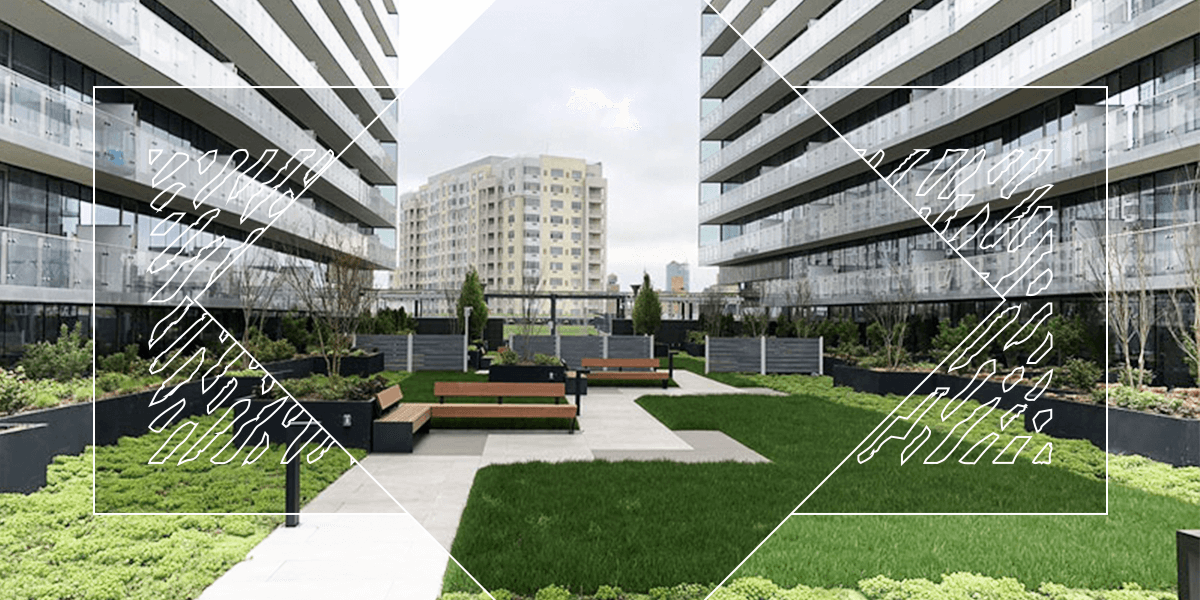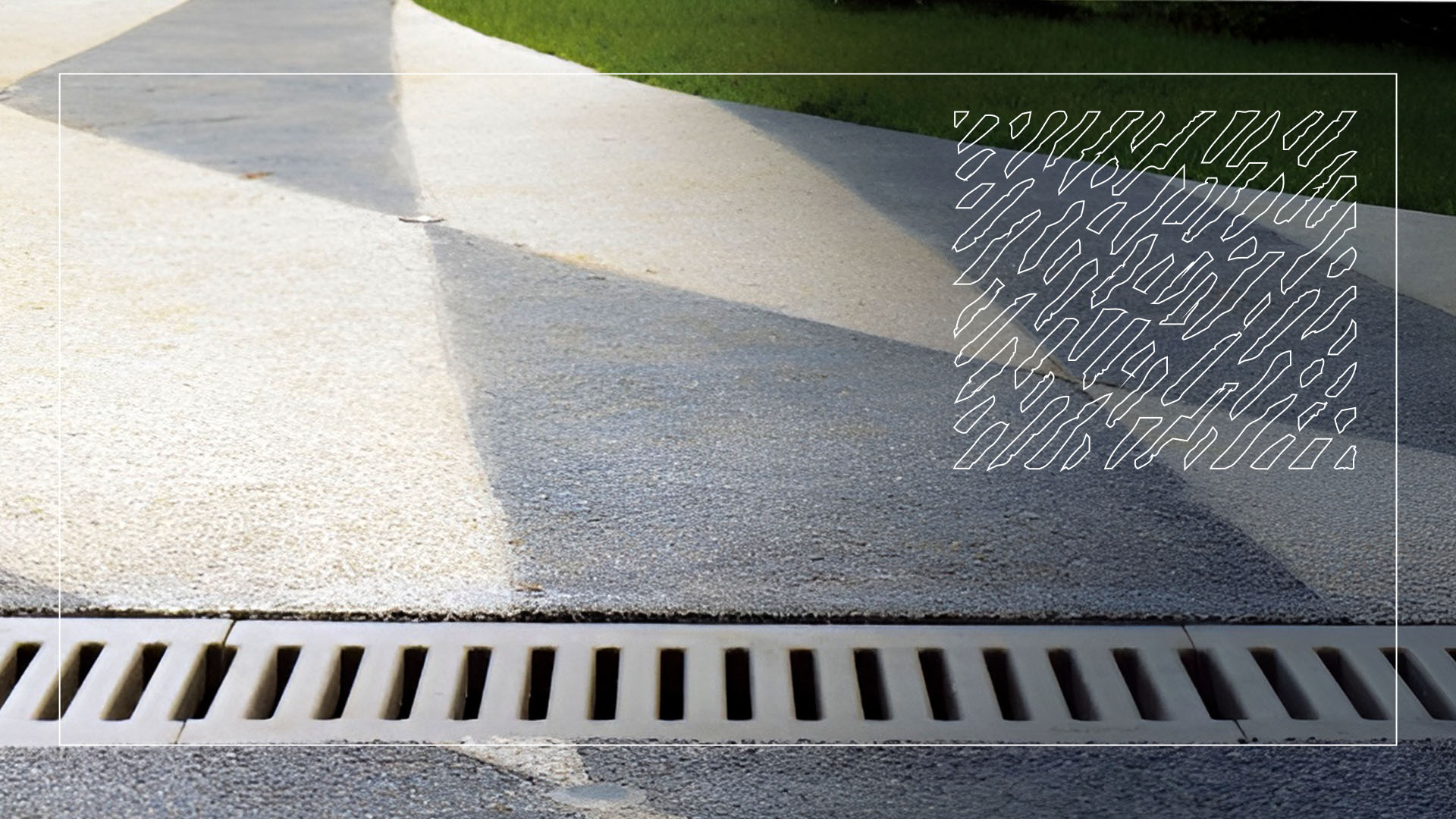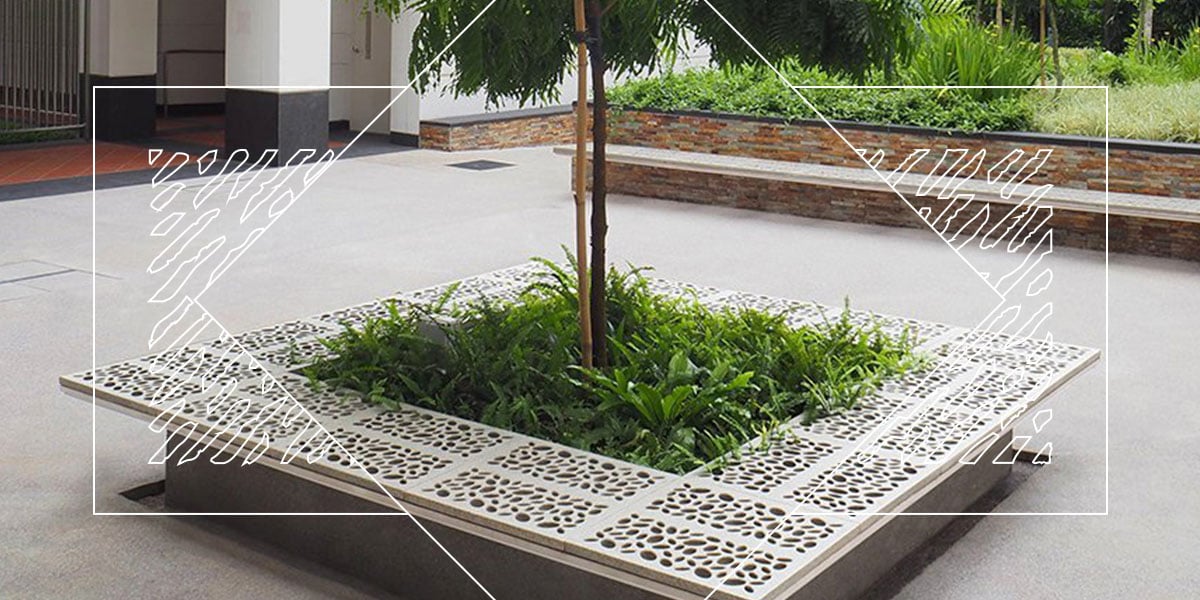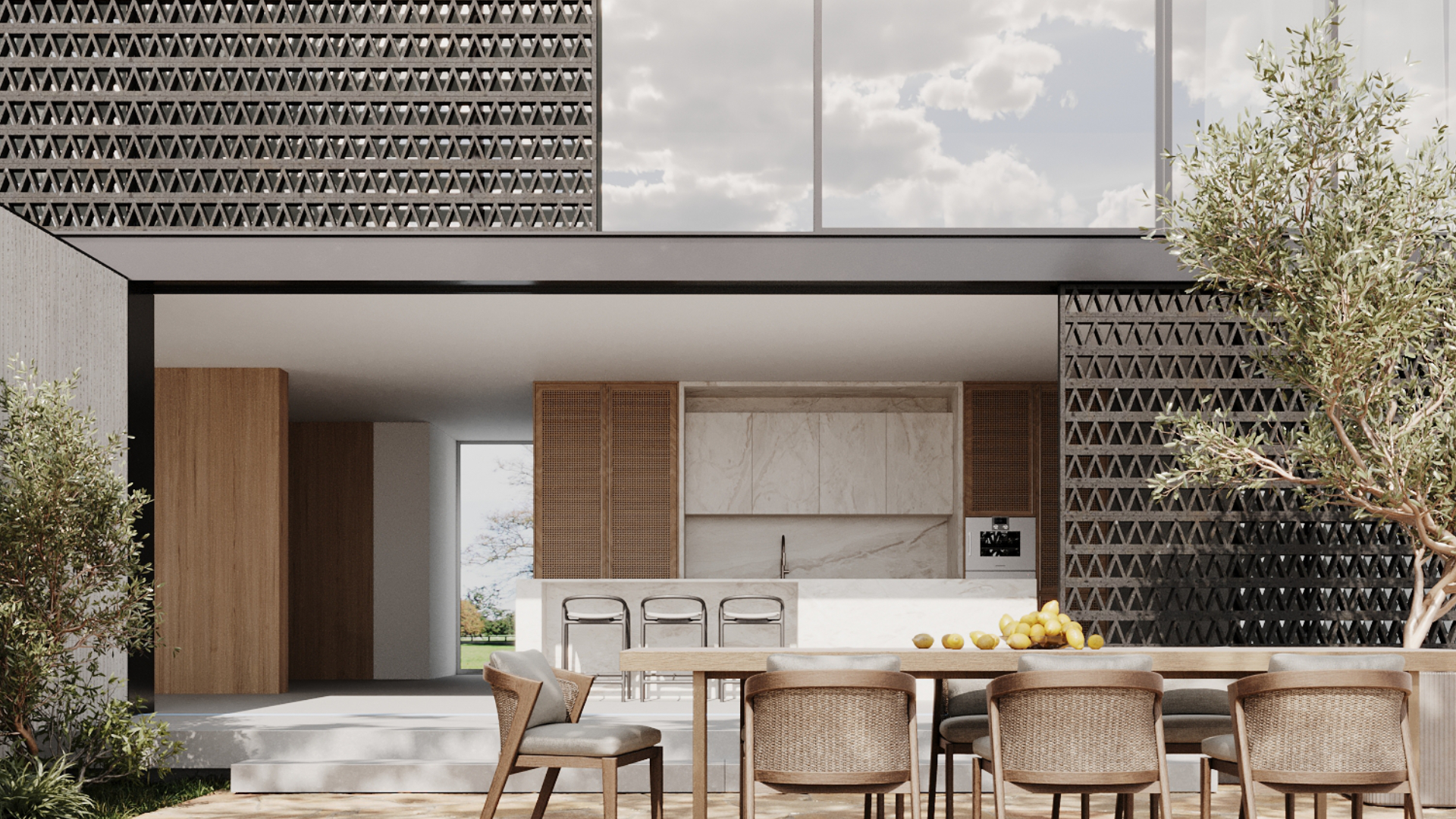Trench drains have many names; channel drains, linear trench drains, trench drain systems, flooring drains, and more. Whatever you choose to call them, they are essential elements in any landscaping project, especially if your space is going to have any form of surface water.
Trench drains are a type of floor drain that has a channel-shaped body that is used for the eradication of surface water. Sometimes, they are also used to hold utility lines or to contain chemical spills in industrial applications.
In landscaping, trench drains will usually have a solid trench grate or cover that is flush with the rest of the landscape. They are long and narrow, with a gentle slope that determines the general direction of the flow of water inside them. Depending on the application and function of the trench drain, their channels can vary significantly in width.
Hardscapes are more prone to runoffs than soft landscapes because there is minimal water absorption. This is why trench drains are particularly useful for hardscape areas, especially when perimeter drains are needed. Typical areas of application include retail stores, parking lots, pools, airports, sports facilities, lawns and gardens, vehicle maintenance facilities, pavements, and spas.
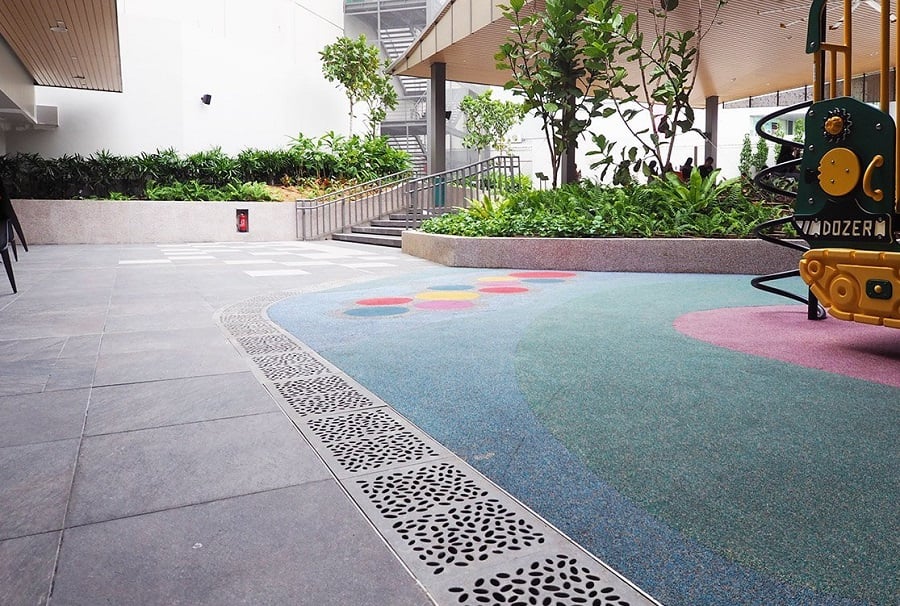
That being said, can trench drains be environmentally friendly?
Trench drains can be environmentally friendly solutions when they are implemented as a form of Sustainable Urban Drainage Systems, or SUDS.
SUDS are systems that are designed to manage the drainage of surface water in urban spaces. They work by either slowing down or holding water in place for other natural processes to break down any pollutants in it. SUDS often provide efficient alternatives to traditional drainage systems that involve the drainage of surface water into piped underground drainage systems.
The design of most SUDS includes several connected stages. This is called the treatment train. The more likely the water is to be contaminated, the more stages the treatment train will have.
Therefore, SUDS are beneficial in many ways. They prevent water pollution, reduce the risk of flooding, and recharge underground water levels, preventing drought. Some of them also create green spaces for people and habitats for wildlife in urban areas.
There are several SUDS techniques that can be implemented, including;
- Swales
- Permeable surfaces
- Basins and ponds
- Wetlands
- Green roofs
- Underground storage
- Rainwater harvesting
- Infiltration trenches, drains, and strips
Trench drains are therefore only a small part of a larger family of SUDS techniques.
Environmental trench drains should enhance the aesthetic quality of the space they are in, such as a community or urban environment, while at the same time being sustainable.
All sustainable urban drainage systems need to be first considered during the site selection process. They need to capture, use, or absorb rainwater effectively instead of rejecting it as a nuisance. In this way, they can improve the quality of life in that space by making it aesthetically pleasing, resilient and vibrant.
Being sustainable means safeguarding the needs of current users while not impeding the ability of future users to meet their needs. Environmental trench drains achieve this by mimicking natural drainage processes through techniques that help them deal with the surface water locally before releasing it back into the environment.
In their functions, they also improve urban air quality, reduce noise, regulate building temperatures, and free up space for other activities such as recreation. As the cherry on top, they are constructed with environmentally friendly materials using sustainable construction methods and are durable enough to ensure that maintenance resources are not wasted needlessly.
Types of trench drains
There are three broad types of trench drains. With minimal intervention, each of these types can be turned into environmentally friendly versions of themselves:
- Cast in place trench drains:
These are installed on-site. The channel is usually dug by hand, and the trench drain manually put in place. This makes it the most labor-intensive type of trench drain.
- Precast trench drains:
These are made off-site, usually in a factory that specializes in this. They come as several separate pieces, which are then transported to the site and laid in place.
- Linear drain systems:
A modern variation of precast drains, these systems tend to be very narrow, making use of light materials like fiberglass, plastic, steel, and polymer concrete. To lay them, you have to dig a trench then assemble the channel and the grate within that trench. Concrete will then be poured all around the layout for added structural support, forming the drain.
Benefits of an environmental trench drain with high-quality trench grates
- Reduction of ponding. A well-laid trench drain that has a good quality grate will significantly reduce or even eliminate any instances of ponding.
- They extend the life of paved surfaces. When water is not left to sit on paved surfaces for too long, its lifespan is almost doubled.
- They help reduce slip hazards
- They prevent flood damage to property. A well-drained surface is continually getting rid of any water on it, even in instances of flooding. Therefore, any water will not sit on it for too long, preventing flood damage to property.
- They improve the usability of the space. This applies to both public users and vehicles, depending on where they have been installed.
Why your choice of trench drain grates is vital for environmental trench drain solutions
Your selection of trench grates will play a critical role in several things, including:
- Rapid drainage. The trench grates facilitate the expulsion of the water from the surface. Plus, the bottom of the drain is shaped to increase the velocity of the flow, which also helps in self-cleaning.
- Ease of maintenance. Quality trench grates are easy to maintain since the smooth surface does not collect debris.
- The negligible absorption of water by the trench drain grates and the internal surface of the channel means it will prevent the collection of bacterial and the seeping of pollutants into the surrounding soil.
- Good quality trench drain grates are also chemical resistant, so they will not be eroded by cleaning agents.
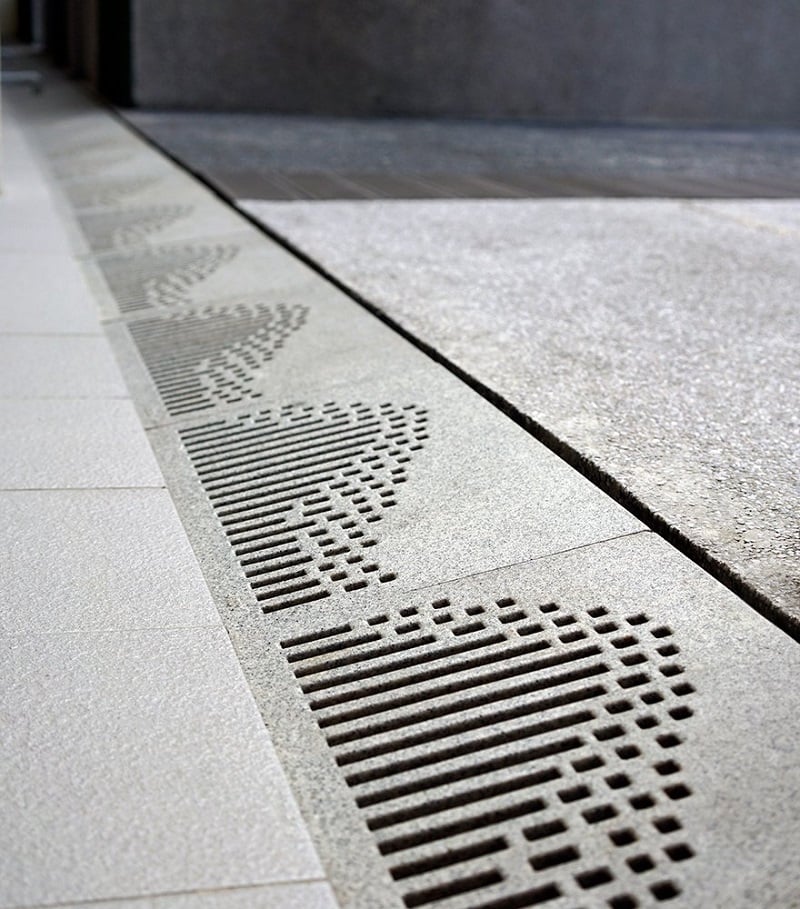
What to look for in trench drain grating and channels
There are four main boxes that your trench drain grating and channels must check:
- Performance: How much liquid do you expect the channel to intercept at max capacity?
- Loading: What loads will be on the grating?
- Durability: How long do you expect the system to last?
- User requirements: This includes everything from aesthetics, ease of removal and maintenance, and safety issues, such as slip resistance, how prone heels are to getting caught, ease of use for persons with disabilities, and so on.
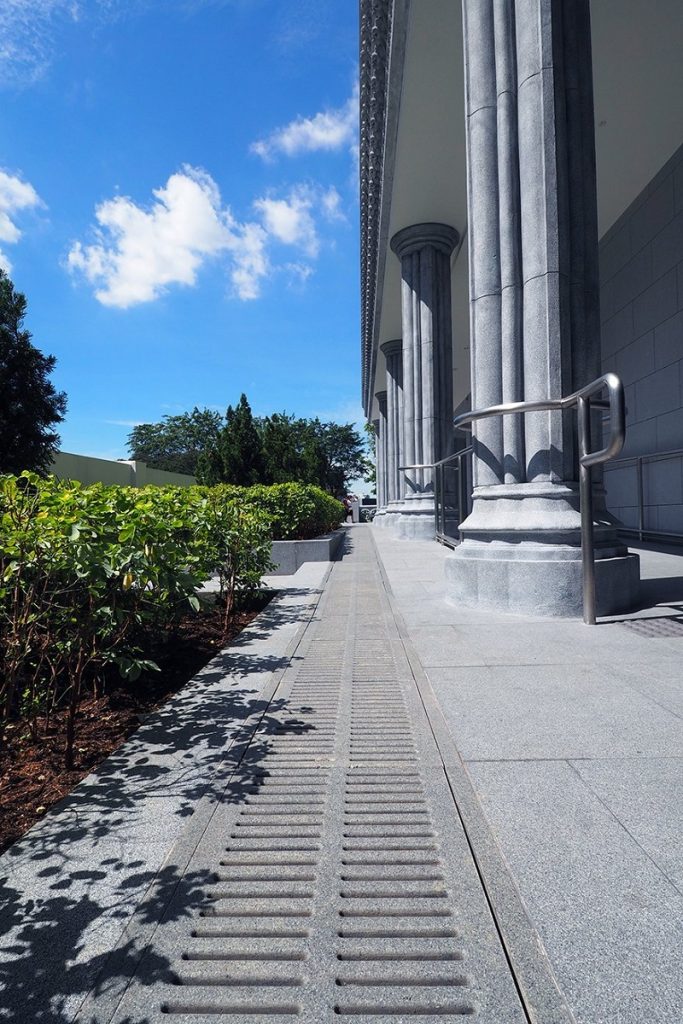
Types of sustainable drainage systems
There are several types of sustainable drainage systems. As stated earlier, the criteria here is to align modern drainage systems with natural processes. Therefore, they often use components that mimic natural processes to integrate urban drainage systems to the site efficiently.
Here are a few examples:
- Swales- Shallow depressions that gather and filter surface water runoff by directing it through soil and surface plants.
- Permeable surfaces- These can either be in the form of a porous pavement material or pavement material that has been divided into sections. The idea here is to allow surface water to seep to the soil below.
- Wetlands- Perfectly suited for areas that experience large volumes of water runoff, they replicate marshes by gathering and filtering water relying solely on their own ecology to remove pollutants.
- Green roofs- Green roofs are landscaped areas on the roofs of buildings. They work by filtering rainwater directly as it falls, reducing the load on other drainage systems.
- Drain channel systems- They convey surface and wastewater to a filtration system or sewer. They come in various shapes and sizes, with every one of them designed to perform specialized functions. Here is a closer look at these types:
Types of environmental trench drain channel systems
Micro Channel Drain
Micro Channel Drains are perfect for areas that do not need a large amount of water to be drained. They are mostly used for residential applications. The trench channel will be about 1.25" wide.
Mini Channel Drain
Wider than the microchannel drain, they offer a larger surface area of collection. Since they are more visible, they are often customized in many ways, including patterned grates, colored grates, or grates made of unique materials such as brass or plastic. They can be used for both residential and non-residential applications. The average width of the channel is about 2.25".
Standard Channel Drain
Although these are similar to regular trench drains found in a large number of non-residential applications, they stand out as environmentally sound because of the type of trench grate they use. They can have various kinds of environmentally-friendly grates, along with 4” wide channels with either flat or slightly sloping bottoms.
Special Channel Drains
There are several different options in this category.
- Wide channel drains: These have a greater surface area for drainage than micro and mini channels. They are ideally suited for areas with a considerably more significant amount of water. The broader channels provide much larger carrying capacity for the water while keeping the grates inconspicuous. Used for both residential and non-residential applications, the average width of the channel is about 4.125" wide.
- Modular channel drains: These trench drains have interlocking joints and a modular design. Their systems are flexible, and connections are easy and quick to make. You can customize them with various types of grates according to your requirements. They have both residential and non-residential applications.
- Sloping trench drains: These drains have a built-in slope to ensure that there is optimal flow throughout the system. They are used for non-residential applications and have customizable grates. Because of their built-in slope, most sloping trench drains are also modular for secure handling, installation, and freight to site.
Final Thoughts
In the end, if you want your trench drain to be environmentally friendly, it must meet all the safety requirements of its users along with sustainability requirements. Coming in a variety of designs that complement the visual appeal of the space they are in is just the cherry on top.




